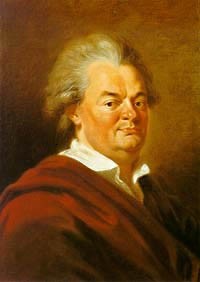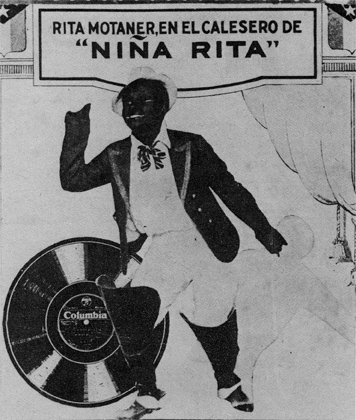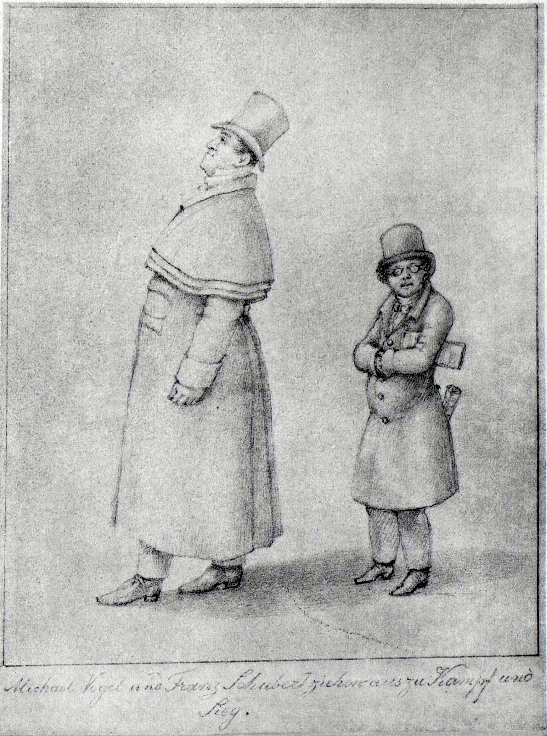|
Christian Schubart
Christian Friedrich Daniel Schubart (24 March 1739 – 10 October 1791) was a German poet, organist, composer, and journalist. He was repeatedly punished for his social-critical writing and spent ten years in severe conditions in jail. Life Born at Obersontheim in Swabia, he entered the University of Erlangen in 1758 as a student of theology. He led a dissolute life, and after two years' stay was summoned home by his parents. After attempting to earn a livelihood as private tutor and as assistant preacher, his musical talents gained him the appointment of organist in Geislingen an der Steige. Meeting Schubart in Ludwigsburg in 1772, Charles Burney called him "the first, real great harpsichord player that I had hitherto met with in Germany ... He is formed on the Bach school; but is an enthusiast, and original in genius. Many of his pieces are printed in Holland; they are full of taste and fire. He played on the Clavichord, with great delicacy and expression; his finger is brillian ... [...More Info...] [...Related Items...] OR: [Wikipedia] [Google] [Baidu] |
Augsburg
Augsburg ( , ; ; ) is a city in the Bavaria, Bavarian part of Swabia, Germany, around west of the Bavarian capital Munich. It is a College town, university town and the regional seat of the Swabia (administrative region), Swabia with a well preserved Altstadt (historical city centre). Augsburg is an Urban districts of Germany, urban district and home to the institutions of the Augsburg (district), Landkreis Augsburg. It is the List of cities in Bavaria by population, third-largest city in Bavaria (after Munich and Nuremberg), with a population of 304,000 and 885,000 in its metropolitan area. After Neuss, Trier, Worms, Germany, Worms, Cologne and Xanten, Augsburg is one of Germany's oldest cities, founded in 15 BC by the Romans as Augsburg#Early history, Augusta Vindelicorum and named after the Roman emperor Augustus. It was a Free Imperial City from 1276 to 1803 and the home of the patrician (post-Roman Europe), patrician Fugger and Welser families that dominated European ban ... [...More Info...] [...Related Items...] OR: [Wikipedia] [Google] [Baidu] |
David Strauss
David Friedrich Strauss (; ; 27 January 1808 – 8 February 1874) was a German liberal Protestant theologian and writer, who influenced Christian Europe with his portrayal of the "historical Jesus", whose divine nature he explored via myth. Strauss conceived of myths as expressions of Truths, as opposed to the modern shorthand of myth for "falsity"- Strauss did not deny Jesus' divine nature. His work was connected to the Tübingen School, which revolutionized study of the New Testament, early Christianity, and ancient religions. Strauss was a pioneer in the historical investigation of Jesus. Early life He was born in Ludwigsburg, near Stuttgart. At age 12 he was sent to the evangelical seminary at Blaubeuren, near Ulm, to be prepared for the study of theology. Two of the principal masters in the school were Professors Friedrich Heinrich Kern (1790–1842) and Ferdinand Christian Baur, who instilled in their pupils a deep appreciation for the ancient classics and the pri ... [...More Info...] [...Related Items...] OR: [Wikipedia] [Google] [Baidu] |
Melodrama
A melodrama is a Drama, dramatic work in which plot, typically sensationalized for a strong emotional appeal, takes precedence over detailed characterization. Melodrama is "an exaggerated version of drama". Melodramas typically concentrate on dialogue that is often bombastic or extremely sentimentality, sentimental, rather than on action. Characters are often Character (arts)#Round vs. flat, flat and written to fulfill established character archetypes. Melodramas are typically set in the private sphere of the home, focusing on morality, family issues, love, and marriage, often with challenges from an outside source, such as a "temptress", a scoundrel, or an aristocratic villain. A melodrama on stage, film, or television is usually accompanied by dramatic and suggestive music that offers further cues to the audience of the dramatic beats being presented. In scholarly and historical musical contexts, melodramas are Victorian era, Victorian dramas in which orchestral music or son ... [...More Info...] [...Related Items...] OR: [Wikipedia] [Google] [Baidu] |
Operetta
Operetta is a form of theatre and a genre of light opera. It includes spoken dialogue, songs and including dances. It is lighter than opera in terms of its music, orchestral size, and length of the work. Apart from its shorter length, the operetta is usually of a light and amusing character. The subject matter may portray "lovers' spats, mistaken identities, sudden reversals of fortune, and glittering parties". It sometimes also includes satirical commentaries. "Operetta" is the Italian diminutive of "opera" and was used originally to describe a shorter, perhaps less ambitious work than an opera. Operetta provides an alternative to operatic performances in an accessible form targeting a different audience. Operetta became a recognizable form in the mid-19th century in France, and its popularity led to the development of many national styles of operetta. Distinctive styles emerged across countries including Austria-Hungary, Germany, England, Spain, the Philippines, Mexico, Cuba, ... [...More Info...] [...Related Items...] OR: [Wikipedia] [Google] [Baidu] |
Frederick The Great
Frederick II (; 24 January 171217 August 1786) was the monarch of Prussia from 1740 until his death in 1786. He was the last Hohenzollern monarch titled ''King in Prussia'', declaring himself ''King of Prussia'' after annexing Royal Prussia from the Polish–Lithuanian Commonwealth in 1772. His most significant accomplishments include military successes in the Silesian Wars, Silesian wars, reorganisation of the Prussian Army, the First Partition of Poland, and patronage of the arts and the Enlightenment. Prussia greatly increased its territories and became a major military power in Europe under his rule. He became known as Frederick the Great () and was nicknamed "Old Fritz" (). In his youth, Frederick was more interested in music and philosophy than war, which led to clashes with his authoritarian father, Frederick William I of Prussia. However, upon ascending to the throne, he attacked and annexed the rich Habsburg monarchy, Austrian province of Silesia in 1742, winning mi ... [...More Info...] [...Related Items...] OR: [Wikipedia] [Google] [Baidu] |
Franz Schubert
Franz Peter Schubert (; ; 31 January 179719 November 1828) was an Austrian composer of the late Classical period (music), Classical and early Romantic music, Romantic eras. Despite his short life, Schubert left behind a List of compositions by Franz Schubert, vast ''oeuvre'', including more than 600 ''Lieder'' (art songs in German) and other vocal works, seven complete symphonies, sacred music, operas, incidental music, and a large body of piano and chamber music. His major works include "Erlkönig (Schubert), Erlkönig", "Gretchen am Spinnrade", and "Ave Maria (Schubert), Ave Maria"; the Trout Quintet, ''Trout'' Quintet; the Symphony No. 8 (Schubert), Symphony No. 8 in B minor (''Unfinished''); the Symphony No. 9 (Schubert), Symphony No. 9 in C major (''Great''); the String Quartet No. 14 (Schubert), String Quartet No. 14 in D minor (''Death and the Maiden''); the String Quintet (Schubert), String Quintet in C major; the Impromptus (Schubert), Impromptus for solo piano; the S ... [...More Info...] [...Related Items...] OR: [Wikipedia] [Google] [Baidu] |
Die Forelle
"" (German for "The Trout"), Op. 32, 550. is a lied, or song, composed in early 1817 for solo voice and piano with music by the Austrian composer Franz Schubert (1797–1828). Schubert chose to set the text of a poem by Christian Friedrich Daniel Schubart, first published in the ' in 1783. The full poem tells the story of a trout being caught by a fisherman, but in its final stanza reveals its purpose as a moral piece warning young women to guard against young men. When Schubert set the poem to music, he removed the last verse, which contained the moral, changing the song's focus and enabling it to be sung by male or female singers. Schubert produced six subsequent copies of the work, all with minor variations. Schubert wrote "" in the single key of D-flat major with a varied (or modified) strophic form. The first two verses have the same structure but change for the final verse to give a musical impression of the trout being caught. In the Deutsch catalogue of Schubert's wor ... [...More Info...] [...Related Items...] OR: [Wikipedia] [Google] [Baidu] |
Musen-Almanach
A ''Musen-Almanach'' ("Muses' Almanac") was a kind of literary annual, popular in Germany from 1770 into the mid-19th century. They were modelled on the ''Almanach des Muses'' published in Paris from 1765. Development in the 1770s The first example was Johann Christian Dieterich's ''Göttinger Musenalmanach'' (GMA) of 1770. It was promoted by the mathematician Abraham Gotthelf Kästner, and published by Heinrich Christian Boie (in partnership with Friedrich Wilhelm Gotter). As a literary outlet for students at the University of Göttingen, it received contributions from Johann Heinrich Voss, Ludwig Christoph Heinrich Hölty, Johann Martin Miller and his relative Gottlob Dietrich Miller, Johann Friedrich Hahn, Johann Thomas Ludwig Wehrs, Johann Anton Leisewitz, and others. In 1774 Boie made Voss editor, but Voss soon left for Hamburg and started a competing almanac; in spring 1775, he was replaced by Leopold Friedrich Günther Goeckingk; he was joined the next year by Gott ... [...More Info...] [...Related Items...] OR: [Wikipedia] [Google] [Baidu] |
Sturm Und Drang
(, ; usually translated as "storm and stress") was a proto-Romanticism, Romantic movement in German literature and Music of Germany, music that occurred between the late 1760s and early 1780s. Within the movement, individual subjectivity and, in particular, extremes of emotion were given free expression in reaction to the perceived constraints of rationalism imposed by the Age of Enlightenment, Enlightenment and associated aesthetic movements. The period is named after Friedrich Maximilian Klinger's Sturm und Drang (play), play of the same name, which was first performed by Abel Seyler's Seyler theatrical company, famed theatrical company in 1777. The philosopher Johann Georg Hamann is associated with ; other significant figures were Johann Anton Leisewitz, Jakob Michael Reinhold Lenz, H. L. Wagner, and Friedrich Maximilian Klinger. Johann Wolfgang von Goethe and Friedrich Schiller were notable proponents of the movement early in their lives, although they ended their period ... [...More Info...] [...Related Items...] OR: [Wikipedia] [Google] [Baidu] |
Reclam
Reclam Verlag is a German publishing house, established in Leipzig in 1828 by Anton Philipp Reclam (1807–1896).Reclam-Museum öffnet in Leipzig in Die Welt (23.10.2018). Retrieved 28 October 2018 It is particularly well known for the "little yellow books" of its ''Universal-Bibliothek'' ("universal library"), simple paperback editions of literary classics for schools and universities. History In 1802 Charles Henri Reclam (1776–1844), whose family originated from , had moved to Leipzig where he established a bookse ...[...More Info...] [...Related Items...] OR: [Wikipedia] [Google] [Baidu] |
Hohenasperg
Hohenasperg, located in the federal state of Baden-Württemberg near Stuttgart, Germany, of which it is administratively part, is an ancient fortress and prison overlooking the town of Asperg. It was an important Celtic oppidum, and a number of very important "princely" burials are close by, in particular the Hochdorf Chieftain's Grave. Geography Hohenasperg is located on a 90-metre-high Late Triassic hill. The hill is located in an upland area, but because of its steep overhangs and wide plateau, it is visible from a long distance and offers an ideal location for a fortification. History Around 500 BC, during the Hallstatt culture, Hallstatt period, the Hohenasperg was a Celts, Celtic principality with a fortified settlement. Numerous Celtic burial sites in the surrounding area are aligned so as to offer a line of sight to the Hohenasperg, e.g. the large Hochdorf Chieftain's Grave, the :de:Prunkgrab Grafenbühl, Grafenbühl grave or the gravesite on the Katharinenlinde by S ... [...More Info...] [...Related Items...] OR: [Wikipedia] [Google] [Baidu] |






